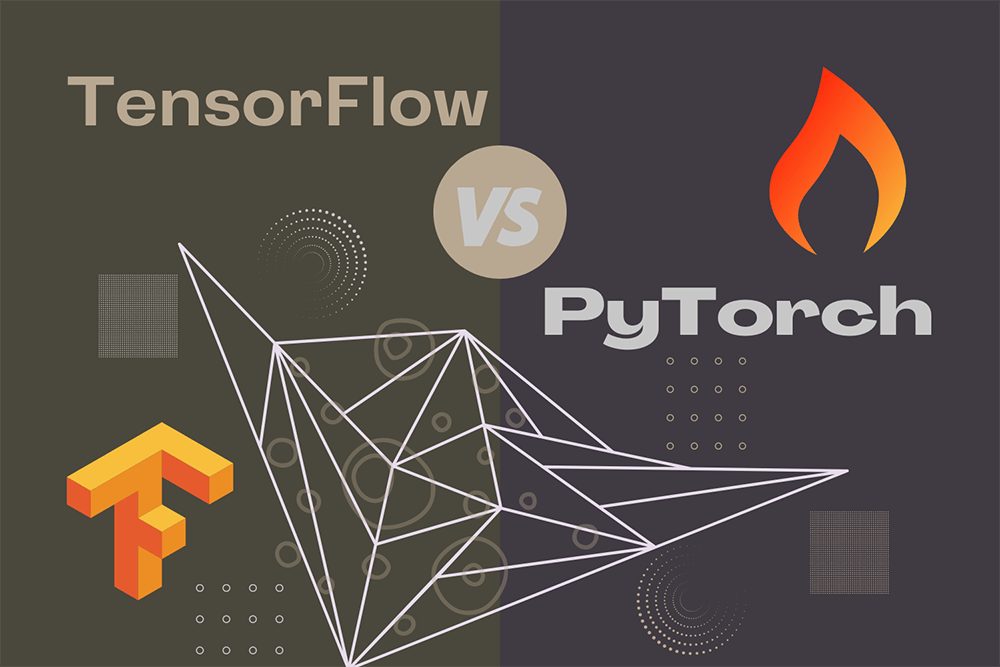Machine learning (ML) and artificial intelligence (AI) have changed how the world solves problems. At the heart of these advancements are two significant frameworks: TensorFlow and PyTorch. These tools are the backbone for building, training, and deploying powerful machine learning models. But choosing the right one is no easy decision. The battle of TensorFlow vs. PyTorch is one of the most discussed topics in the AI and ML community.
This article will explore TensorFlow and PyTorch’s key differences, advantages, and real-world applications. Whether you’re a beginner looking to dive into AI or a professional aiming to make the right choice for your next project, this guide is here to help!
What Are TensorFlow and PyTorch?
Before comparing, let’s first understand what TensorFlow and PyTorch are.
TensorFlow: A Brief Overview
TensorFlow, developed by Google Brain, is an open-source framework primarily used for deep learning and other machine learning tasks. Launched in 2015, TensorFlow quickly became a favorite among researchers and developers because of its flexibility, scalability, and vibrant ecosystem. It provides:
- Tools for building neural networks.
- Deploying ML models across various platforms.
- Working with massive datasets.
PyTorch: A Brief Overview
PyTorch, developed by Facebook’s AI Research Lab (FAIR), is another open-source machine learning library. Released in 2016, it gained popularity for its simplicity and dynamic computation graph, making it especially appealing to researchers. PyTorch is widely appreciated for its Pythonic approach, which aligns closely with the programming style most Python developers are used to.
Critical Differences Between TensorFlow and PyTorch
- Static vs Dynamic Computation Graphs
One of the most fundamental differences between TensorFlow and PyTorch is how they handle computation graphs.
- TensorFlow uses static computation graphs. The entire graph is defined before the code is executed, which can lead to better optimization during training. However, this can make debugging and model experimentation less intuitive.
- PyTorch, on the other hand, employs a dynamic computation graph. This means the graph is built on the fly as operations are executed, making it more flexible and accessible to debug.
Verdict: PyTorch might be your go-to if flexibility and experimentation are key. However, TensorFlow’s static graph shines for production environments requiring high optimization.
- Ease of Use
When comparing TensorFlow vs. PyTorch,, regarding user-friendliness, often takes the cake. Its syntax feels natural for Python developers, and the dynamic graph makes learning and debugging straightforward. With its older versions, TensorFlow had a steeper learning curve, but introducing TensorFlow 2.0 brought significant improvements, including eager execution (similar to PyTorch).
Verdict: PyTorch has the edge for beginners, but TensorFlow has closed the gap with TensorFlow 2.0.
- Performance and Scalability
TensorFlow has long been recognized for its performance and scalability, particularly for production environments. It offers excellent tools like TensorFlow Serving for deploying models on servers and TensorFlow Lite for mobile and IoT devices. PyTorch, while performant, was historically seen as a research-oriented framework. However, with the introduction of TorchServe, PyTorch is quickly catching up.
Verdict: TensorFlow remains the leader in large-scale deployments, but PyTorch is just slightly behind.
- Visualization Tools
Visualizing model performance and understanding what’s happening under the hood is critical for profound learning practitioners.
- TensorFlow offers TensorBoard, a powerful visualization tool for monitoring metrics, viewing the computation graph, and analyzing hyperparameters.
- PyTorch doesn’t have a built-in visualization tool like TensorBoard but integrates well with third-party libraries like Matplotlib or Weights & Biases.
Verdict: TensorFlow has a more polished solution that is out of the box.
- Community and Ecosystem
TensorFlow and PyTorch have solid communities and ecosystems but serve slightly different audiences.
- TensorFlow has broader industry adoption and offers many pre-built models and deployment tools, making it ideal for production use cases.
- Researchers and academics heavily favor PyTorch due to their ease of experimentation.
Verdict: It’s a tie! TensorFlow is better for industry use, while PyTorch excels in Research settings.
Pros and Cons of TensorFlow vs PyTorch
Let’s summarize the key advantages and disadvantages of each framework in a simple table:
AspectTensorFlowPyTorch
Ease of Use Improved with TensorFlow 2.0 but still complex Intuitive and Pythonic
Performance Optimized for production Great for Research but catching up
Visualization TensorBoard built-in Requires third-party tools
Community Larger industry focus Strong academic support
Flexibility Static graphs are great for optimization. Dynamic graphs are ideal for experimentation
Deployment Mature tools like TensorFlow Lite Recent improvements with TorchServe
Real-World Use Cases: TensorFlow vs PyTorch
To make an informed decision, it helps to see where these frameworks excel in real-world scenarios.
When to Choose TensorFlow
- Mobile Applications: TensorFlow Lite makes deploying ML models on mobile devices seamless.
- Enterprise Solutions: TensorFlow Serving ensures smooth deployment in production.
- Cross-Platform Development: TensorFlow supports multiple languages like JavaScript (with TensorFlow.js), C++, and more.
- Complex Models: TensorFlow’s ecosystem offers pre-trained models for object detection, image segmentation, and NLP tasks.
When to Choose PyTorch
- Academic Research: PyTorch’s dynamic graph makes it the preferred choice for prototyping new models.
- Small to Medium Projects: PyTorch’s simplicity allows faster iteration cycles.
- Computer Vision: With libraries like TorchVision, PyTorch simplifies image processing tasks.
- Flexibility: PyTorch shines if your project requires custom layers or unconventional architectures.
Which Framework Is Better for Beginners?
For newcomers to machine learning, deciding between TensorFlow and PyTorch can feel daunting. Here’s a quick breakdown:
- If you want to focus on Research or quick experimentation, start with PyTorch.
- TensorFlow is a better fit if you want to learn deployment and scalability.
Thankfully, both frameworks have many tutorials, documentation, and online resources.
How TensorFlow and PyTorch Are Evolving
The competition between TensorFlow and PyTorch has spurred innovation on both sides. TensorFlow 2.0 addressed many user concerns by adopting eager execution and simplifying the API. Meanwhile, PyTorch has made strides in production readiness with TorchServe and ONNX (Open Neural Network Exchange) support.
Both frameworks continue to add features that improve performance, usability, and deployment options, ensuring they stay at the forefront of AI development.
Final Thoughts on TensorFlow vs PyTorch
Regarding TensorFlow vs PyTorch, the “better” framework depends on your project requirements, team expertise, and goals. TensorFlow excels in scalability and deployment, making it a top choice for industry applications. PyTorch, on the other hand, is the go-to for Research and prototyping, thanks to its intuitive and flexible approach.
Ultimately, both TensorFlow and PyTorch are potent tools catering to slightly different needs. Why not explore both? After all, learning both frameworks will only make you a more robust AI developer.
Whether you’re building a groundbreaking AI model or just starting your ML journey, the TensorFlow vs PyTorch debate is one you’ll encounter. With the insights provided here, you can make an informed decision.
You may also read



